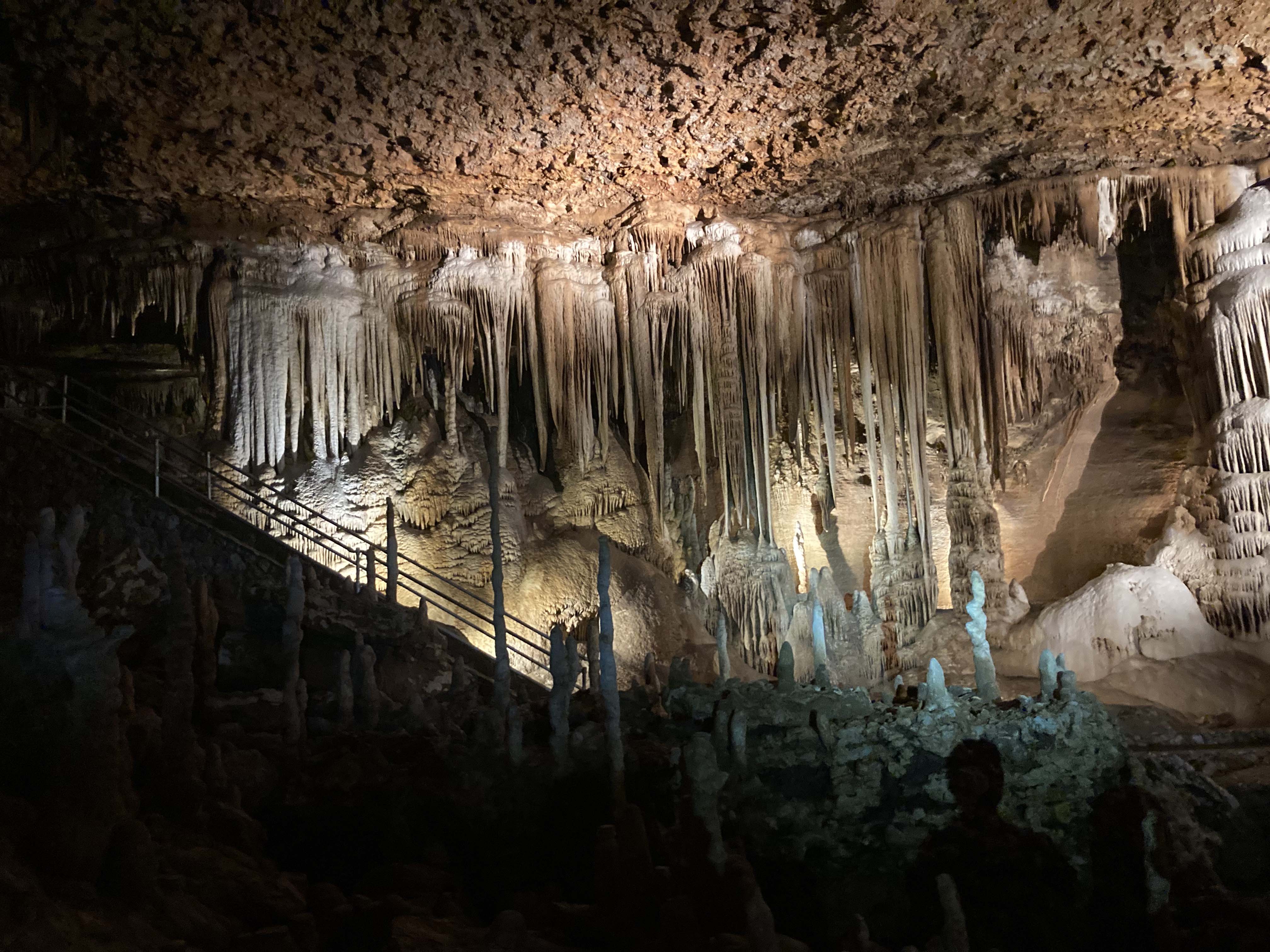Blanchard Springs Cavern
Contact
University of Arkansas System Division of Agriculture
Cooperative Extension Service
2301 S. University Ave.
Little Rock, AR 72204

Blanchard Springs Cavern
Caves are fascinating. Cool, wet, dark and mysterious. My first spelunking experience was as a skinny farm kid crawling beneath a foot-thick slab of sandstone where rainwater had eroded a muddy, rock-strewn cavity about two feet high. This early experience didn’t quite prepare me for the beauty and wonder found in Blanchard Springs Cavern.
Since its opening in 1973, I have visited this magnificent cave system located in the Sylamore District of the Ozark-St. Francis National Forest about fifteen miles from Stone County’s Mountain View several times. Each time I am amazed by what beauty Nature can create when given enough time and left undisturbed to do its thing.
Blanchard Springs Cavern is unique in another way. It is the only tourist cave operated by the U.S. Forest Service, an agency more accustomed to working with loggers, hunters and cattlemen than tourists. When the beauty of the caves was first presented to Forest Service bureaucrats in the 1960s, they tried to interest the National Park Service into developing it as one of their sites. The parks folks thought this remote corner of the Ozarks too inaccessible, so they declined the offer. Thankfully, the Forestry Service people realized its potential and spent almost a decade getting the cave ready for visitation.
That there was a cave in the hills had been known since the 1930s, when some daring men with the CCC lowered themselves down the 75-foot-deep chimney into the lower cave chamber. This is the level where the spectacular Blanchard Springs exits the side of the mountain and continues the process of cave building.
Interestingly, it was the Cold War of the 1950s that lead to the discovery of the upper chamber where the Dripstone Trail is laid out. The government thought it prudent to explore natural caves to assess their capacity to serve as fallout shelters in the event of a nuclear war. Hobby cave explorers were paid to explore the Blanchard Springs cave system but it was not deemed suitable as a fallout shelter.
The Ozarks, with their thick deposits of limestone, are honeycombed by cave systems. Geologists say it has a karst topography, meaning that the region is underlain by limestone deposits that are often dissolved by acidic, flowing water. Karst regions are found throughout the world. The word is German and was first used in the 19th century to describe a region in Slovenia. Karst regions are known for water (sometimes oil) percolating through porous layers, sinkholes (sudden collapses of a cave roof), and caves.
The limestone layers that comprise the cave system were deposited in a warm, shallow sea between 350 to 450 million years ago. About 350 million years ago tectonic forces began uplifting the region that would eventually become the Ozark Dome. Once the dome was out of the water, it immediately began eroding. Rainwater caused surface erosion and cut deep valleys while some percolated into the soil and through the cracked rock and began the process of dissolving the soft limestone.
Rainwater today usually has a pH of between 5.0 and 5.5 because droplets falling through the air interact with carbon dioxide and create carbonic acid. In the geologically ancient past the carbon dioxide content of the atmosphere was much higher, so the rainwater acidity of that era was likely lower.
Over time the limestone dissolves, leaving behind a cave. Geologists think that the upper part of the cave was formed about 50 million years ago. But the water keeps coming, carrying with it dissolved minerals. Heavy rain on the surface arrives in the uppermost cave about 20 minutes later after passing through more than 200 feet of rock and soil. As these droplets of water drip from the ceiling or splash onto the floor, they slowly evaporate, leaving behind their tiny load of dissolved minerals. These deposited minerals form all manner of fantastical forms: stalactites, stalagmites, columns, flowstones, curtains, soda straws and more. The colors of the deposits hint at the kinds of minerals originally dissolved in the droplet of water.
And so it goes. Continuing into the future, for Blanchard Springs Cavern is a living cave with droplets still slowly transforming and morphing each formation into some delicate and beautiful feature. If you haven’t been there in a while, they reopened in August 2022 after the pandemic shutdown. It is worth the effort to see this fascinating place in person.
